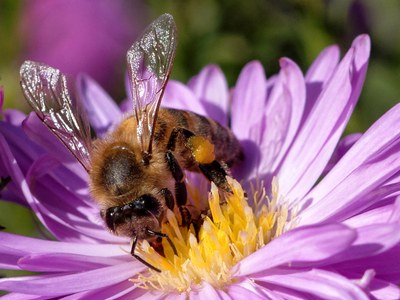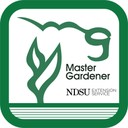Bee Friendly
 The undisturbed prairies of North Dakota were once a haven for bees, but the landscape of our state is changing. The oil boom, increased pesticide use and an onslaught of mites are threatening bees. We can no longer take these insects for granted.
The undisturbed prairies of North Dakota were once a haven for bees, but the landscape of our state is changing. The oil boom, increased pesticide use and an onslaught of mites are threatening bees. We can no longer take these insects for granted.
Bees are vital for a productive garden. We need them for cucumbers, melons and squash. We need them for berries, apples, cherries and other popular fruits.
We can take steps to make our landscapes bee friendly. Bees are just like every other creature on earth. They need food, water and a safe shelter.
Bees need food. Grow lots of different flowers. Bees will forage on flowers from the first crocus in spring until the last aster in fall (photo). Native plants are especially well suited for attracting native bees and other pollinators.
Preferred perennials include beebalm, blazing star, blanketflower, goldenrod and aster. Useful annuals include sunflower, salvia and snapdragon. Herbs such as borage, basil and chives are welcome.
Bees need water. Bees will drink from rims of bird baths. A piece of wood in the bath can serve as a landing platform for bees. You can make a bee bath by placing a shallow plate on the ground, lining it with rocks.
Bees need a safe shelter. Bees generally do not need help in constructing nests, but bee houses are easy to construct. Many bees nest in soil so allow some bare patches in the garden.
Avoid insecticides. Dust and wettable powder formulations are especially dangerous because they collect in the hair of bees. Insecticides that are relatively safe for bees include Bacillus thuringiensis, neem and horticultural oils. Chemicals should be applied in the evening when bees are not active. Avoid products with long residual activity such as soil drenches of imidacloprid.
The Xerces Society is a good source of information on attracting pollinators. For more information, read Bee-utiful Landscapes: Building a Pollinator Garden.
Written by Tom Kalb, Extension Horticulturist, North Dakota State University. Information was taken from an article published in the NDSU Yard & Garden Report, July 31, 2015. The photo was made available under a Creative Commons license specified by the photographer: Michael Frank Franz.





